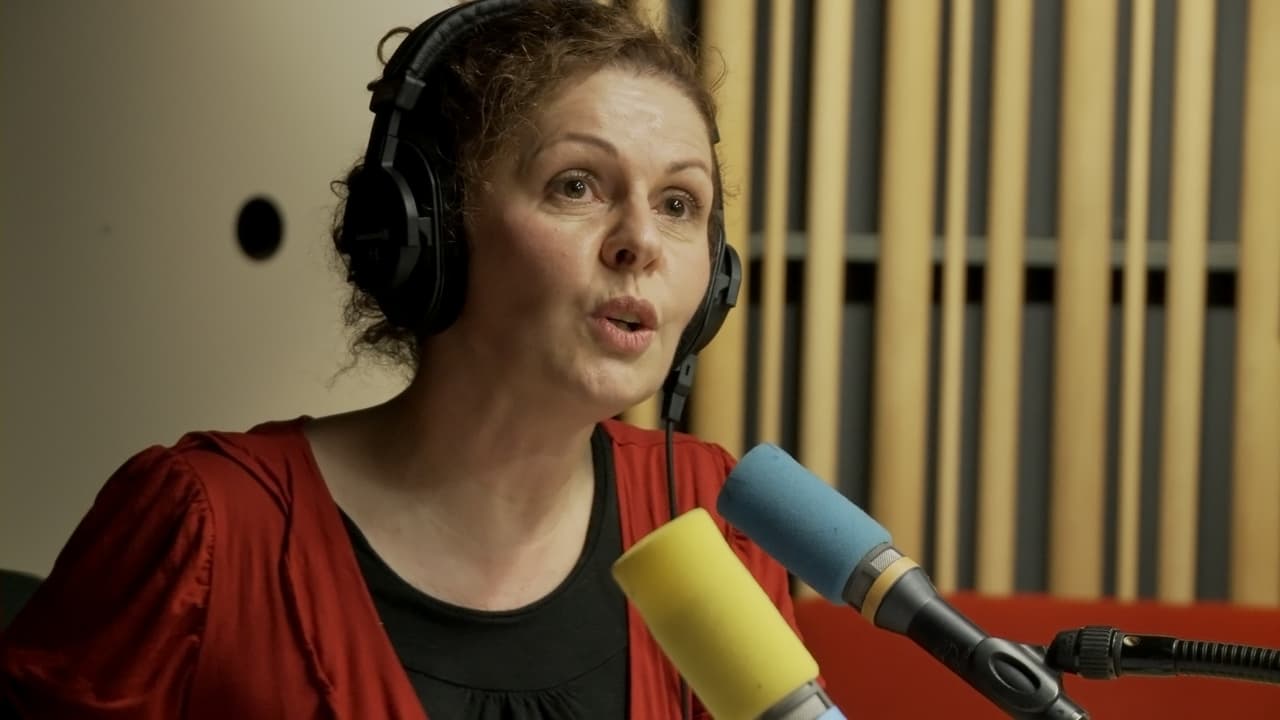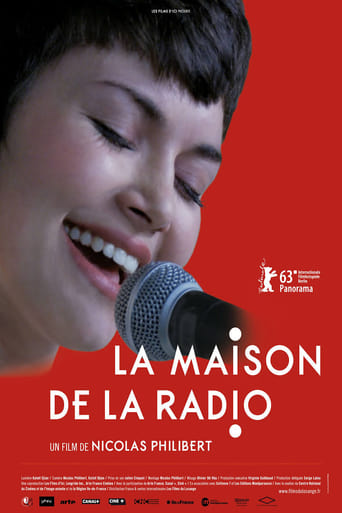

Nicholas Philbert is to documentary film-making what Francis Albert Sinatra is to popular singing and in La Maison de la Radio he has added yet another charm to the 24 carat bracelet he has been compiling since first he stepped behind a camera and yelled 'action'. The 'a day in the life of ...' concept is not, of course, a new one but fortunately there is considerable mileage left to be extracted and some of the choicest is contained within the time-frame of a day in the life of France Radio, the French equivalent of the US PBS channels, in which Philbert's camera makes us privy to and/or a fly on the wall at the many types of programme produced by this virtual national institution. Thus we eavesdrop on rehearsals for drama shows, news meetings, chorale recitals, music programmes, celebrity (Umberto Eco) interviews, a blind newscasters' preparations for her broadcast and even leave the building briefly with 1) two reporters following the Tour de France on a motor cycle and 2) a naturist setting up concealed microphones in a wood. Like they used to say in the redtop all human life is there and captured to a fare-thee-well by Monsieur Philbert.
... View MoreI liked it! It's the kind of documentaries that let the subject talk for itself (quite literally) without meddling with the viewing pleasure by suggesting a narrative. Not much happens, I am certain that for some it will be a snoozefest, but it's quite engaging, and funny. The author is so sympathetic towards its subject, making fun of no-one, always showing everyone at their most interesting, professional, human. It's not for everyone I guess; there is no drama, no critique, no denunciation, it's an intimate and suffuse portrait with some comedic moments, and an occasion to play cultural celebrity spotting. In a few decades it will be a prized object of nostalgia, a very alive document of a bygone era.
... View MoreI have just returned home after a visit to the Copenhagen festival, CPH-DOX and a viewing of 'La Maison De la Radio' in the local Grand Theater. We even had the pleasure to meet both the new ambassador from to Denmark and Nicolas Phillibert before the film, and NP stayed on after the film and to lots of questions. Nice. It's a wonderful film, in the well known style of Nicolas Phillibert. If you liked his other movies, if you like people, if you like language, if you like sound, if you like radio and if you like a good well made documentary, don't miss out on this one. I loved it!
... View MoreNicolas Philibert has done it again... and made it again! The King of French documentary has indeed put one more time into practice the method that agrees with him so well : like he did in his former efforts, he has succeeded in investing a more or less confined space, in penetrating into this terra incognita, in filming it with spur-of-the-moment discretion and in skilfully editing the mass of images thus obtained into a coherent but leisurely-looking whole. And of course without adding any spoken commentary - one of his specialties. After having immersed us into the Louvre Museum ("La Ville Louvre"), a primary school ("Etre ou avoir") or a Parisian zoo ("Nénette"), Philibert now invites us to visit with him la "Maison de la Radio", this fascinating round building - designed by architect Henry Bernard - which, for exactly fifty years now, has housed Radio France, the French public service radio broadcaster. Radio France is a busy giant beehive swarming night and day with hardworking people, creating fiction, spreading and/or analyzing news, educating and/or entertaining listeners. It is a pleasure to meet many of them in the film even if one can regret the absence of a few "stars" of France Inter (Paula Jacques, Daniel Mermet, Kathleen Evin, etc.), France Culture (Philippe Meyer, Laurent Goumard, ...) or France Musique (Christophe Bourseiller, ...). To be fair, one must admit for a fact that not all of those working for Radio France can reasonably be present on the screen within a running time hardly exceeding an hour and half : ten hours would not have been enough to show everything and everybody. Anyway, what we see can only be the result of a well-considered choice as the first person to ask the question of what and who would appear on the screen was without any doubt Nicolas Philibert himself.The filmmaker's response to this basic question (it does not matter whether the decision was made before production started or at the time of editing) was to follow the simplest of patterns: the description of a day in the life of Radio France from one dawn to another. Such a bright choice results in the feeling of our being allowed to stroll at leisure along the corridors unnoticed, to sneak discreetly into recording studios and to stare with wonder at radio in the making. Quite a privilege indeed! Naturally, "La Maison de la Radio" is nothing more than an insight and what we get is logically only glimpses of the whole thing, but the pieces that make the jigsaw (a series of anecdotal, colorful funny or poetic vignettes) that make are well chosen ones. Moreover, the film, despite this juxtaposition principle, never runs out of focus as the director gets around the pending threat by using an effective workaround: the regular recurrence of some of the protagonists. He thus creates a continuity providing a firm backbone to the film. The most two most effective examples this consummate narrative technique are the recording of a radio drama (featuring Eric Cavaca) by producer Marguerite Gateau, a serious professional whose color-tinted humanity makes her appearances a pleasure and the interventions of Marie-Claude Rabot-Pinson, the news department supervisor with her special way to handle black humor. On the other hand a few isolated small scenes stand out remarkably, also helping the movie not to collapse like a house of cards : Laetitia Bernard, a blind news presenter preparing her news broadcast ; the anxious wait of writer Bénédicte Heim before answering Alain Veinstein's questions and, best of all, the delightfully comical interview of classical music specialist Frédéric Lodéon, of whom only the head appears, within the frame of piles of CDS. All in all, this is a typical Philibert documentary consisting as usual in a fresh look at a little known universe. It can be seen by all, like all his other works, whether they have informed previously or not for "La Maison de la Radio" is the (inspired) look of a greenhorn and aren't most of us ... greenhorns?
... View More